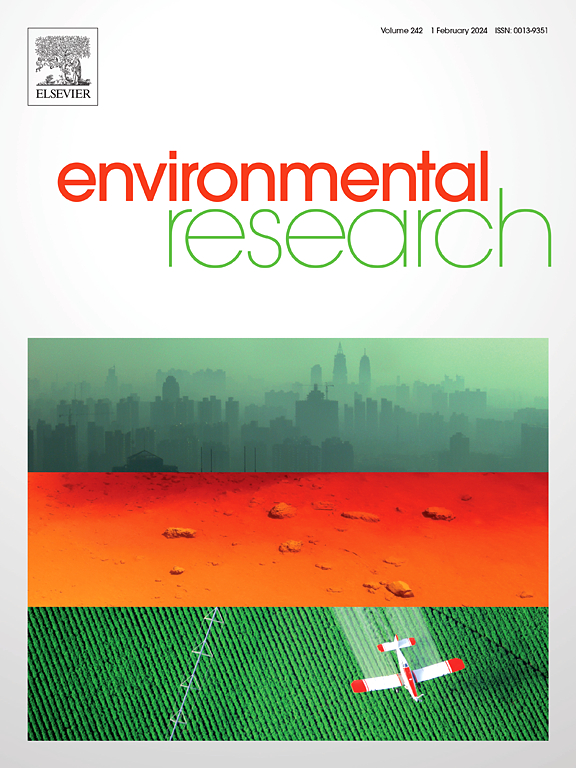全氮水平是澳大利亚农业土壤有机碳储量的关键制约因素。
IF 7.7
2区 环境科学与生态学
Q1 ENVIRONMENTAL SCIENCES
引用次数: 0
摘要
了解土壤驱动因素如何调节土壤有机碳(SOC)储量对于深入了解陆地碳-气候反馈从而适应气候变化至关重要。然而,目前数据驱动的有机碳预测模型往往忽略了全氮(TN)数据,从而限制了我们对碳氮相互作用及其对大尺度有机碳储存机制的影响的理解。利用可解释的机器学习技术,我们研究了关键驱动因素(TN、气候、海拔、土地利用、pH、SiO2)如何影响澳大利亚主要农业生产区不同土壤深度的有机碳储量。将TN纳入基于数据的SOC预测模型,可将可解释的变化提高约11%。全氮被认为是影响有机碳储量的主要因素,占所有深度观测到的变化的47%以上,超过了地下土壤的气候影响。此外,我们确定了限制有机碳积累的TN水平的深度特异性阈值:0 ~ 10 cm土壤1.45 mg/g, 10 ~ 20 cm土壤0.80 mg/g, 20 ~ 30 cm土壤0.63 mg/g。对不同情景下有机碳储量的预测表明,达到这些TN阈值可以促进有机碳积累,并有助于抵消年平均气温升高1°C带来的有机碳损失。本研究强调全氮水平是澳大利亚农业土壤有机碳储量的关键制约因素,因此在预测大规模销售有机碳动态和制定土壤固碳策略时应明确考虑全氮水平。本文章由计算机程序翻译,如有差异,请以英文原文为准。
Total nitrogen levels as a key constraint on soil organic carbon stocks across Australian agricultural soils
Understanding how pedoclimatic drivers regulate soil organic carbon (SOC) stock is crucial for gaining insights into terrestrial carbon-climate feedback and thus adaptation to climate change. However, current data-driven SOC predictive models often neglect to incorporate total nitrogen (TN) data, thereby constraining our understanding of carbon-nitrogen interactions and their influences on SOC storage mechanisms across large scales. Utilizing an interpretable machine learning technique, we investigated how key drivers (TN, climate, elevation, land use, pH, SiO2) affect SOC stocks at different soil depths across Australian major agricultural production regions. Incorporating TN into data-based SOC predictive models enhanced the explained variation by approximately 11 %. TN was identified as the predominant factor influencing SOC stocks, accounting for over 47 % of observed variability across all depths and outweighing climate effects in subsurface soils. Furthermore, we identified depth-specific thresholds of TN levels that constrain SOC accumulation: 1.45 mg/g soil for 0–10 cm, 0.80 mg/g soil for 10–20 cm and 0.63 mg/g soil for 20–30 cm. Projections of SOC stocks under different scenarios suggest that achieving these TN thresholds can promote SOC accumulation and help offset SOC losses associated with a 1 °C increase in mean annual temperature. This study underscores TN levels as a key constraint on SOC stocks across Australian agricultural soils, and thus should be explicitly considered when predicting large-scale SOC dynamics and formulating soil carbon sequestration strategies.
求助全文
通过发布文献求助,成功后即可免费获取论文全文。
去求助
来源期刊

Environmental Research
环境科学-公共卫生、环境卫生与职业卫生
CiteScore
12.60
自引率
8.40%
发文量
2480
审稿时长
4.7 months
期刊介绍:
The Environmental Research journal presents a broad range of interdisciplinary research, focused on addressing worldwide environmental concerns and featuring innovative findings. Our publication strives to explore relevant anthropogenic issues across various environmental sectors, showcasing practical applications in real-life settings.
 求助内容:
求助内容: 应助结果提醒方式:
应助结果提醒方式:


